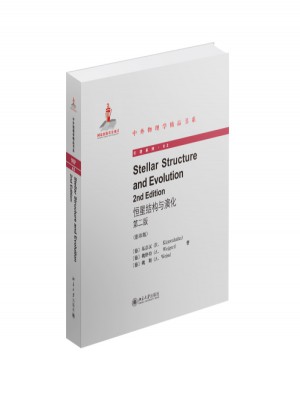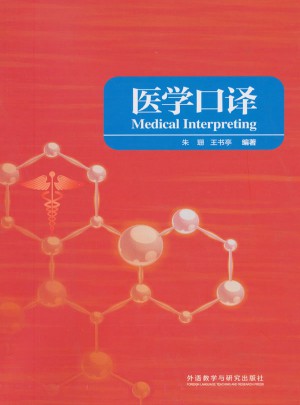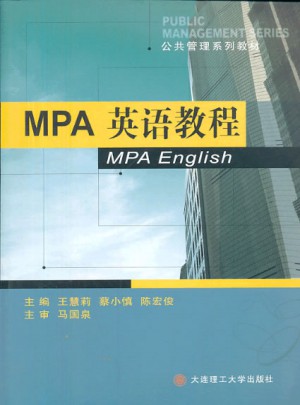Part I The Basic Equations
1 Coordinates, Mass Distribution, and Gravitational Field
in Spherical Stars
1.1 Eulerian Description
1.2 Lagrangian Description
1.3 The Gravitational Field
2 Conservation of Momentum
2.1 Hydrostatic Equilibrium
2.2 The Role of Density and Simple Solutions
2.3 Simple Estimates of Central Values Pc; Tc
2.4 The Equation of Motion for Spherical Symmetry
2.5 The Non-spherical Case
2.6 Hydrostatic Equilibrium in General Relativity
2.7 The Piston Model
3 The Virial Theorem
3.1 Stars in Hydrostatic Equilibrium
3.2 The Virial Theorem of the Piston Model
3.3 The Kelvin-Helmholtz Timescale
3.4 The Virial Theorem for Non-vanishing Surface Pressure
4 Conservation of Energy
4.1 Thermodynamic Relations
4.2 The Perfect Gas and the Mean MolecularWeight
4.3 Thermodynamic Quantities for the Perfect, Monatomic Gas
4.4 Energy Conservation in Stars
4.5 Global and Local Energy Conservation
4.6 Timescales
5 Transport of Energy by Radiation and Conduction
5.1 Radiative Transport of Energy
5.1.1 Basic Estimates
5.1.2 Diffusion of Radiative Energy
5.1.3 The Rosseland Mean for
5.2 Conductive Transport of Energy
5.3 The Thermal Adjustment Time of a Star
5.4 Thermal Properties of the Piston Model
6 Stability Against Local, Non-spherical Perturbations
6.1 Dynamical Instability
6.2 Oscillation of a Displaced Element
6.3 Vibrational Stability
6.4 The Thermal Adjustment Time
6.5 Secular Instability
6.6 The Stability of the Piston Model
7 Transport of Energy by Convection
7.1 The Basic Picture
7.2 Dimensionless Equations
7.3 Limiting Cases, Solutions, Discussion
7.4 Extensions of the Mixing-Length Theory
8 The Chemical Composition
8.1 Relative Mass Abundances
8.2 Variation of Composition with Time
8.2.1 Radiative Regions
8.2.2 Diffusion
8.2.3 Convective Regions
9 Mass Loss
Part II The Overall Problem
10 The Differential Equations of Stellar Evolution
10.1 The Full Set of Equations
10.2 Timescales and Simplifications
11 Boundary Conditions
11.1 Central Conditions
11.2 Surface Conditions
11.3 Influence of the Surface Conditions and Properties of
Envelope Solutions
11.3.1 Radiative Envelopes
11.3.2 Convective Envelopes
11.3.3 Summary
11.3.4 The T _r Stratification
12 Numerical Procedure
12.1 The ShootingMethod
12.2 The Henyey Method
12.3 Treatment of the First- and Second-Order Time Derivatives
12.4 Treatment of the Diffusion Equation
12.5 Treatment of Mass Loss
12.6 Existence and Uniqueness
Part III Properties of Stellar Matter
13 The Perfect Gas with Radiation
13.1 Radiation Pressure
13.2 Thermodynamic Quantities
14 Ionization
14.1 The Boltzmann and Saha Formulae
14.2 Ionization of Hydrogen
14.3 Thermodynamical Quantities for a Pure Hydrogen Gas
14.4 Hydrogen-HeliumMixture
14.5 The General Case
14.6 Limitation of the Saha Formula
15 The Degenerate Electron Gas
15.1 Consequences of the Pauli Principle
15.2 The Completely Degenerate Electron Gas
15.3 Limiting Cases
15.4 Partial Degeneracy of the Electron Gas
16 The Equation of State of Stellar Matter
16.1 The Ion Gas
16.2 The Equation of State
16.3 Thermodynamic Quantities
16.4 Crystallization
16.5 Neutronization
16.6 Real Gas Effects
17 Opacity
17.1 Electron Scattering
17.2 Absorption Due to Free-Free Transitions
17.3 Bound-Free Transitions
17.4 Bound-Bound Transitions
17.5 The Negative Hydrogen Ion
17.6 Conduction
17.7 Molecular Opacities
17.8 Opacity Tables
18 Nuclear Energy Production
18.1 Basic Considerations
18.2 Nuclear Cross Sections
18.3 Thermonuclear Reaction Rates
18.4 Electron Shielding
18.5 The Major Nuclear Burning Stages
18.5.1 Hydrogen Burning.
18.5.2 Helium Burning
18.5.3 Carbon Burning and Beyond
18.6 Neutron-Capture Nucleosynthesis
18.7 Neutrinos
Part IV Simple Stellar Models
19 Polytropic Gaseous Spheres
19.1 Polytropic Relations
19.2 Polytropic Stellar Models
19.3 Properties of the Solutions
19.4 Application to Stars
19.5 Radiation Pressure and the Polytrope n D 3.
19.6 Polytropic Stellar Models with Fixed K
19.7 Chandrasekhar's Limiting Mass
19.8 Isothermal Spheres of an Ideal Gas
19.9 Gravitational and Total Energy for Polytropes
19.10 Supermassive Stars
19.11 A Collapsing Polytrope
20 Homology Relations
20.1 Definitions and Basic Relations
20.2 Applications to Simple Material Functions
20.2.1 The Case ? D 0
20.2.2 The Case ? D ? D ' D 1; a D b D 0
20.2.3 The Role of the Equation of State
20.3 Homologous Contraction
21 Simple Models in the U-V Plane
21.1 The U-V Plane
21.2 Radiative Envelope Solutions
21.3 Fitting of a Convective Core
21.4 Fitting of an Isothermal Core
22 The Zero-AgeMain Sequence
22.1 Surface Values
22.2 Interior Solutions
22.3 Convective Regions
22.4 Extreme Values of M
22.5 The Eddington Luminosity
23 Other Main Sequences
23.1 The Helium Main Sequence.
23.2 The Carbon Main Sequence.
23.3 Generalized Main Sequences
24 The Hayashi Line
24.1 Luminosity of Fully ConvectiveModels
24.2 A Simple Description of the Hayashi Line
24.3 The Neighbourhood of the Hayashi Lineand the Forbidden Region
24.4 Numerical Results
24.5 Limitations for Fully ConvectiveModels
25 Stability Considerations
25.1 General Remarks
25.2 Stability of the Piston Model
25.2.1 Dynamical Stability
25.2.2 Inclusion of Non-adiabatic Effects
25.3 Stellar Stability
25.3.1 Perturbation Equations
25.3.2 Dynamical Stability
25.3.3 Non-adiabatic Effects
25.3.4 The Gravothermal Specific Heat
25.3.5 Secular Stability Behaviour of Nuclear Burning
Part V Early Stellar Evolution
26 The Onset of Star Formation
26.1 The Jeans Criterion
26.1.1 An Infinite Homogeneous Medium.
26.1.2 A Plane-Parallel Layer in Hydrostatic Equilibrium
26.2 Instability in the Spherical Case
26.3 Fragmentation
27 The Formation of Protostars.
27.1 Free-Fall Collapse of a Homogeneous Sphere
27.2 Collapse onto a Condensed Object
27.3 A Collapse Calculation
27.4 The Optically Thin Phase and the Formation of a Hydrostatic Core
27.5 Core Collapse
27.6 Evolution in the Hertzsprung-Russell Diagram
28 Pre-Main-Sequence Contraction.
28.1 Homologous Contraction of a Gaseous Sphere
28.2 Approach to the Zero-Age Main Sequence
29 From the Initial to the Present Sun
29.1 Known Solar Data
29.2 Choosing the Initial Model
29.3 A Standard Solar Model
29.4 Results of Helioseismology.
29.5 Solar Neutrinos.
30 Evolution on the Main Sequence
30.1 Change in the Hydrogen Content
30.2 Evolution in the Hertzsprung-Russell Diagram
30.3 Timescales for Central Hydrogen Burning
30.4 Complications Connected with Convection
30.4.1 Convective Overshooting
30.4.2 Semiconvection
30.5 The Sch¨onberg-Chandrasekhar Limit
30.5.1 A Simple Approach: The Virial Theorem and Homology
30.5.2 Integrations for Core and Envelope.
30.5.3 Complete Solutions for Stars with Isothermal Cores
Part VI Post-Main-Sequence Evolution
31 Evolution Through Helium Burning: Intermediate-Mass Stars
31.1 Crossing the Hertzsprung Gap
31.2 Central Helium Burning
31.3 The Cepheid Phase.
31.4 To Loop or Not to Loop
31.5 After Central Helium Burning
32 Evolution Through Helium Burning: Massive Stars
32.1 Semiconvection
32.2 Overshooting
32.3 Mass Loss
33 Evolution Through Helium Burning: Low-Mass Stars
33.1 Post-Main-Sequence Evolution
33.2 Shell-Source Homology
33.3 Evolution Along the Red Giant Branch.
33.4 The Helium Flash
33.5 Numerical Results for the Helium Flash
33.6 Evolution After the Helium Flash.
33.7 Evolution from the Zero-Age Horizontal Branch
Part VII Late Phases of Stellar Evolution
34 Evolution on the Asymptotic Giant Branch
34.1 Nuclear Shells on the Asymptotic Giant Branch
34.2 Shell Sources and Their Stability.
34.3 Thermal Pulses of a Shell Source.
34.4 The Core-Mass-Luminosity Relation for Large Core Masses.
34.5 Nucleosynthesis on the AGB
34.6 Mass Loss on the AGB
34.7 A Sample AGB Evolution
34.8 Super-AGB Stars.
34.9 Post-AGB Evolution
35 Later Phases of Core Evolution
35.1 Nuclear Cycles
35.2 Evolution of the Central Region
36 Final Explosions and Collapse
36.1 The Evolution of the CO-Core
36.2 Carbon Ignition in Degenerate Cores
36.2.1 The Carbon Flash
36.2.2 Nuclear Statistical Equilibrium
36.2.3 Hydrostatic and Convective Adjustment
36.2.4 Combustion Fronts.
36.2.5 Carbon Burning in AccretingWhite Dwarfs
36.3 Collapse of Cores of Massive Stars
36.3.1 Simple Collapse Solutions
36.3.2 The Reflection of the Infall
36.3.3 Effects of Neutrinos
36.3.4 Electron-Capture Supernovae
36.3.5 Pair-Creation Instability
36.4 The Supernova-Gamma-Ray-Burst Connection
Part VIII Compact Objects
37 White Dwarfs
37.1 Chandrasekhar's Theory
37.2 The Corrected M<










